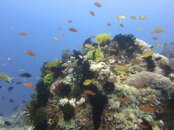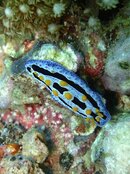I'm new to underwater photography, and considering buying a Canon S100. I just want to take nice pictures of big or small animal. I don't need them to be professional quality.
I don't know much about camera either, but I've been researching the S100. If I were to use the S100 and the canon housing, will I see fish eye effect or vignetting? I'm just not sure what I should buy along with this camera. By the way, when do you need a wet lens? I read these posts and still don't quite understand. http://www.scubaboard.com/forums/ca...-ikelite-housing-af35-strobe.html#post6274994 and Wet lens [Archive] - ScubaBoard - Scuba Diving Forum - Diving Social Network.
Thank you
I don't know much about camera either, but I've been researching the S100. If I were to use the S100 and the canon housing, will I see fish eye effect or vignetting? I'm just not sure what I should buy along with this camera. By the way, when do you need a wet lens? I read these posts and still don't quite understand. http://www.scubaboard.com/forums/ca...-ikelite-housing-af35-strobe.html#post6274994 and Wet lens [Archive] - ScubaBoard - Scuba Diving Forum - Diving Social Network.
Thank you






